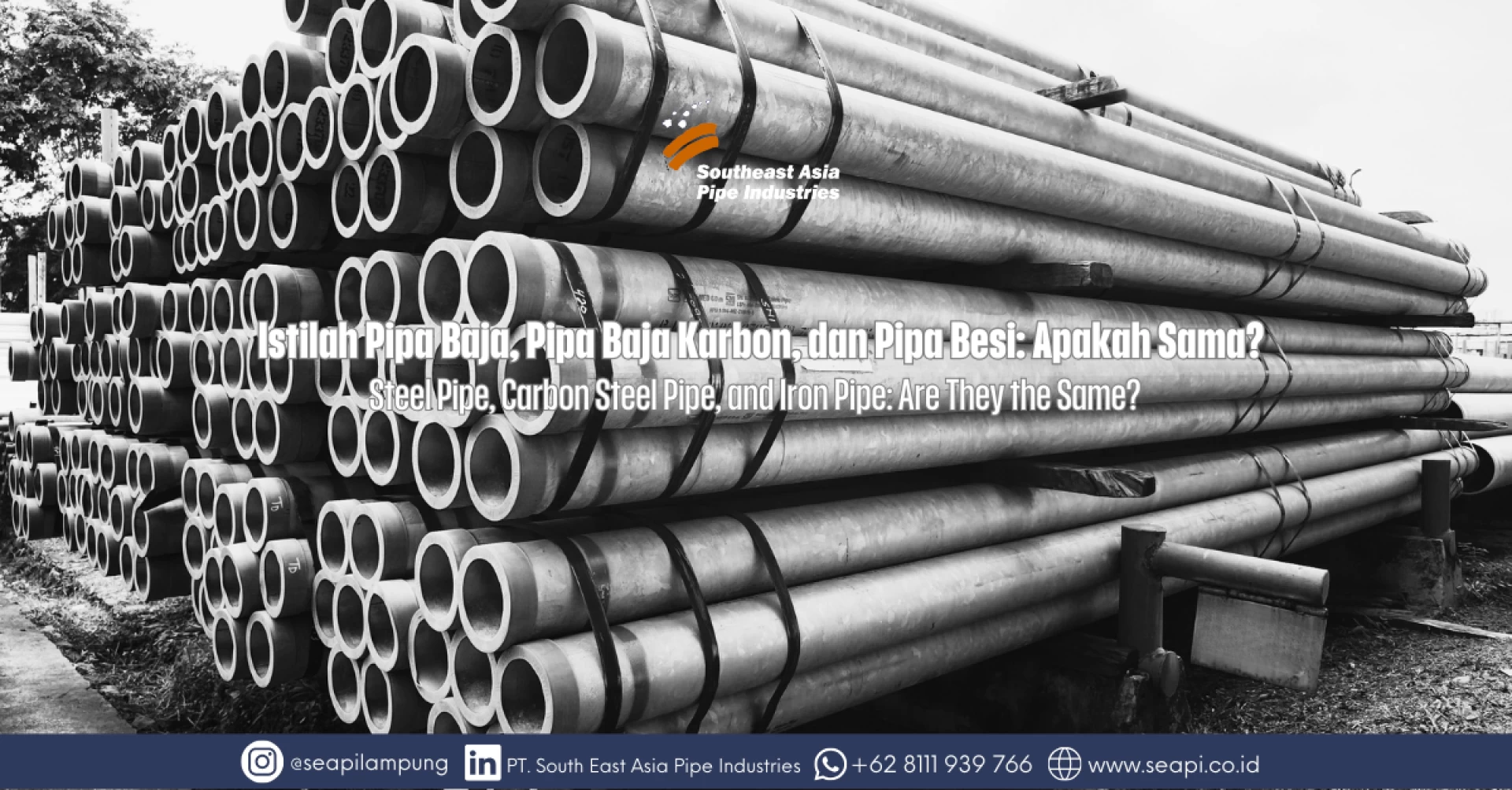Hello Pipe Enthusiasts!
You may have often read or heard the terms Steel Pipe, Carbon Steel Pipe, and Iron Pipe, are these three terms the same? This article explains the differences between the commonly confusing terms steel pipe, carbon steel pipe, and iron pipe, and provides a practical guide for selecting materials and pipe types for industrial projects from BPI’s technical and application-oriented perspective.
Terms and Main Differences
The following is an explanation of the terms and the main differences between steel pipes, carbon steel pipes, and iron pipes:
- Steel pipe is a general term for pipes made from steel as the base material; its use ranges from structural elements to pressure piping.
- Carbon steel pipe is a subcategory of steel in which carbon is the primary strengthening element; controlled carbon content determines mechanical properties such as strength and ductility, making it commonly used for line pipe, tubing, and pressure applications.
- Iron pipe is sometimes used colloquially as a synonym for “steel pipe,” but technically it can refer to products made of cast iron or other ferrous materials that have different characteristics (e.g., brittleness in cast iron) and therefore are not always identical to carbon steel pipe.
Production Types and Application Implications
For many transmission and infrastructure projects, welded manufacturing methods are often chosen because of production efficiency and the ability to meet large diameter requirements.
Welded (ERW, LSAW, HSAW): efficient for large diameters and long transmissions; LSAW produces a longitudinal butt‑welded seam commonly used in trunk lines and certain structures.
Practical implications: selection among welded variants affects safety margin, cost, and fabrication processes, so it must be aligned with operating pressure, corrosive environment, and tender requirements.
Quick Guide to Choosing for Your Project
- Determine operational demands: design pressure, temperature, and cyclic loads determine grade and pipe type.
- Analyze the environment: for corrosive conditions or presence of H2S, choose appropriate materials and coatings; carbon steel pipe often requires FBE/3LPE/3LPP for long‑term protection.
- Check specifications and documentation: request Mill Test Reports, NDT records, and relevant standards (API, ASTM, JIS, AWWA, UL, or national standards like SNI) before ordering.
- Optimize total cost of ownership (TCO): consider material, coating, installation, and maintenance costs in the final decision.
Bakrie Pipe Industries provides technical consultation to select the right material and fabrication method, complete documentation such as Mill Certificates or Mill Test Reports and NDT records to facilitate supplier qualification, galvanizing and internal or external epoxy coating options (FBE, 3LPE, 3LPP) as well as special protection for sour or offshore conditions, and production flexibility across various welded methods (ERW, LSAW, HSAW) so technical and cost solutions can be optimized according to project specifications.
Closing
Although the terms are sometimes used interchangeably in the field, carbon steel pipe has a more specific technical meaning compared to the general term iron pipe; correct selection requires technical analysis and complete documentation. Send your project specifications to the BPI team for recommendations on material, production type, and appropriate technical‑commercial offers
[Click here to contact Marketing & Sales via WhatsApp]
